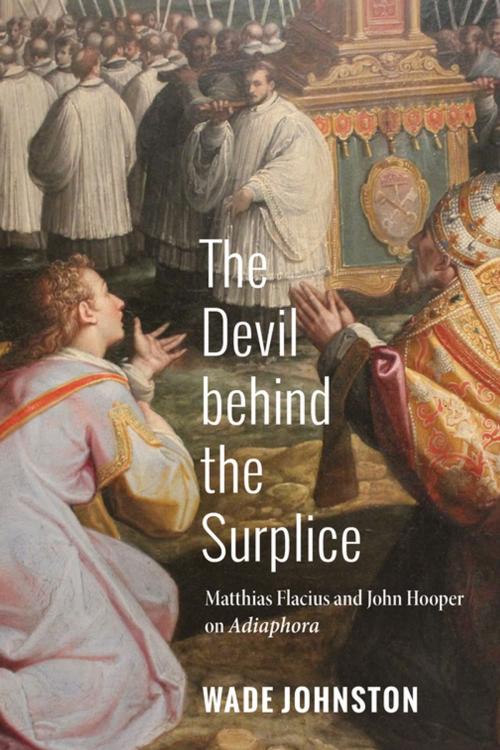The Devil behind the Surplice
Matthias Flacius and John Hooper on Adiaphora
Nonfiction, Religion & Spirituality, Christianity| Author: | Wade Johnston | ISBN: | 9781498242615 |
| Publisher: | Wipf and Stock Publishers | Publication: | January 16, 2018 |
| Imprint: | Pickwick Publications | Language: | English |
| Author: | Wade Johnston |
| ISBN: | 9781498242615 |
| Publisher: | Wipf and Stock Publishers |
| Publication: | January 16, 2018 |
| Imprint: | Pickwick Publications |
| Language: | English |
Between 1548 and 1551, controversies over adiaphora, or indifferent matters, erupted in both Germany and England. Matthias Flacius Illyricus in Germany and John Hooper in England both refused to accept, among other things, the same liturgical vestment: the surplice. While Flacius' objections to the imperial liturgical requirements were largely contextual, because the vestments and rites were forced on the church and were part of a recatholicizing agenda, Hooper protested because he was convinced that disputed vestments and rites lacked a biblical basis. The Devil behind the Surplice demonstrates that, while Flacius fought to protect the reformation principle of justification by grace alone through faith alone, Hooper strove to defend the reformation principle that Scripture alone was the source and norm of Christian doctrine and practice. Ultimately, Flacius wanted more Elijahs, prophets to guide a faithful remnant, and Hooper wanted a new Josiah, a young reform king to purify the kingdom and strip it of idolatry.
Between 1548 and 1551, controversies over adiaphora, or indifferent matters, erupted in both Germany and England. Matthias Flacius Illyricus in Germany and John Hooper in England both refused to accept, among other things, the same liturgical vestment: the surplice. While Flacius' objections to the imperial liturgical requirements were largely contextual, because the vestments and rites were forced on the church and were part of a recatholicizing agenda, Hooper protested because he was convinced that disputed vestments and rites lacked a biblical basis. The Devil behind the Surplice demonstrates that, while Flacius fought to protect the reformation principle of justification by grace alone through faith alone, Hooper strove to defend the reformation principle that Scripture alone was the source and norm of Christian doctrine and practice. Ultimately, Flacius wanted more Elijahs, prophets to guide a faithful remnant, and Hooper wanted a new Josiah, a young reform king to purify the kingdom and strip it of idolatry.















